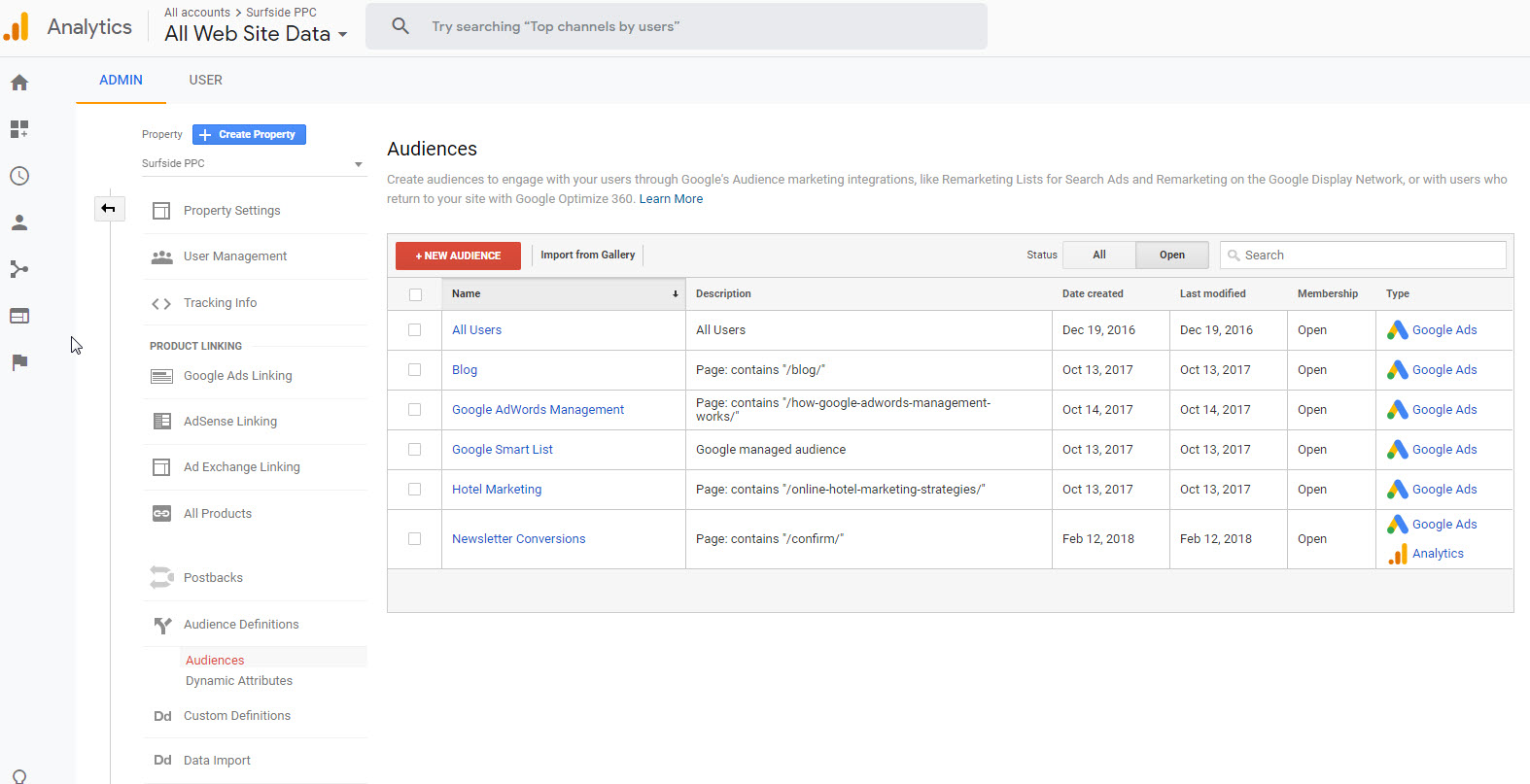Taking Advantage Of Remarketing in Google Analytics: A Comprehensive Guide
Harnessing remarketing in Google Analytics offers services a critical side in reaching out to possible customers. This overview will lose light on the important steps involved in taking advantage of the full capacity of remarketing in Google Analytics, leading to improved marketing results.
Understanding Remarketing in Google Analytics
Remarketing in Google Analytics enables organizations to strategically target customers that have formerly connected with their internet site or mobile application. By leveraging information from Google Analytics, services can produce personalized remarketing lists based upon individual habits, such as pages seen, activities taken, or details goals accomplished. This effective device allows businesses to re-engage with individuals who have revealed interest in their items or solutions, inevitably boosting the probability of conversion.
Recognizing the different types of remarketing techniques is crucial for an effective project - What Is “Remarketing” In Google Analytics?. Google Analytics supplies different options, including typical remarketing, vibrant remarketing, and remarketing checklists for search ads (RLSA) Each kind serves an one-of-a-kind function and can be tailored to fulfill certain advertising goals
In addition, analyzing the efficiency of remarketing campaigns is essential for enhancing results. Google Analytics gives valuable understandings right into the efficiency of various remarketing approaches, permitting businesses to make data-driven decisions and improve their targeting method. By continuously keeping track of and readjusting remarketing efforts based upon analytics data, businesses can make the most of ROI and drive success in their advertising initiatives.
Establishing Remarketing Campaigns

After establishing audience checklists, the following action is to link Google Analytics with Google Advertisements. By connecting these two systems, businesses can seamlessly move target market listings from Google Analytics to Google Ads for remarketing functions. This integration enables for more specific targeting and much better campaign efficiency.
When the accounts are linked, businesses can develop remarketing projects in Google Ads using the target market notes previously defined in Google Analytics. These campaigns can be personalized with particular advertisement creatives, messaging, and bidding approaches to successfully re-engage with previous site visitors and drive conversions. By adhering to these actions, organizations can leverage the power of remarketing to improve their advertising and marketing efforts and enhance ROI.
Utilizing Audience Division Methods

Predefined sectors in Google Analytics allow you to promptly analyze usual target market groups like brand-new users, returning customers, or individuals who completed a details goal on your website. Custom segments, on the other hand, allow you to develop one-of-a-kind sectors based on particular requirements that are important to your service purposes. Dynamic remarketing lists automatically adjust based on user habits, showing tailored ads to customers that have actually connected with your site in certain methods.
Analyzing Remarketing Performance Metrics
Upon reviewing the performance of remarketing campaigns in Google Analytics, the evaluation of crucial efficiency metrics gives valuable insights right into audience involvement and conversion prices. By diving into metrics such as click-through prices (CTR), conversion prices, price per acquisition (CPA), and return on ad spend (ROAS), marketing experts can gauge the success of their remarketing efforts. Analyzing these metrics enables marketers to enhance projects, improve audience targeting, and allocate budget plans properly to improve overall remarketing performance.
Maximizing Remarketing Methods
When refining remarketing techniques in Google Analytics, concentrating on audience segmentation is paramount for attaining campaign success. By separating your audience right into details sectors based on their behavior, useful link demographics, or interests, you can customize your advertisements much more efficiently to every team. This targeted strategy boosts the likelihood of engaging users who have currently shown passion in your services or items, bring about greater conversion rates.
One more critical facet of optimizing remarketing strategies is continuously screening and refining your projects (What Is “Remarketing” In Google Analytics?). A/B testing various advertisement creatives, messaging, or deals can assist you recognize what resonates best with your target market and drives one of the most conversions. By analyzing the efficiency of these tests in Google Analytics, you can make data-driven choices to optimize your remarketing initiatives further
Moreover, leveraging dynamic remarketing can considerably enhance your project results. This function permits you to reveal individualized advertisements to users based on their previous communications with your internet site, showcasing services or products they have actually previously viewed. By delivering tailored material to users based more on their interests and behaviors, dynamic remarketing can aid raise involvement and drive conversions.
Conclusion
In verdict, using remarketing in Google Analytics is a critical technique to target individuals who have actually formerly involved with a web site. By creating personalized audience listings and making use of target market division methods, services can optimize remarketing advocate boosted conversion prices. Examining performance metrics and constantly enhancing methods are important for making the most of the visit the site efficiency of remarketing efforts.
Google Analytics supplies different choices, including typical remarketing, dynamic remarketing, and remarketing lists for search advertisements (RLSA)After setting up target market checklists, the following action is to connect Google Analytics with Google Ads. By linking these two systems, services can flawlessly transfer target market checklists from Google Analytics to Google Ads for remarketing purposes.As soon as the accounts are linked, companies can develop remarketing projects in Google Ads using the target market lists previously specified in Google Analytics.When refining remarketing techniques in Google Analytics, focusing on audience division is extremely important for attaining campaign success.